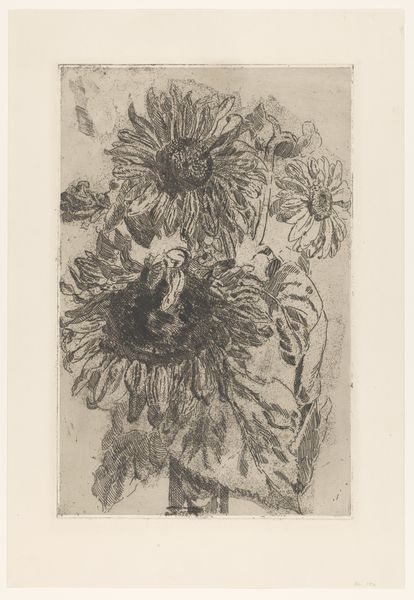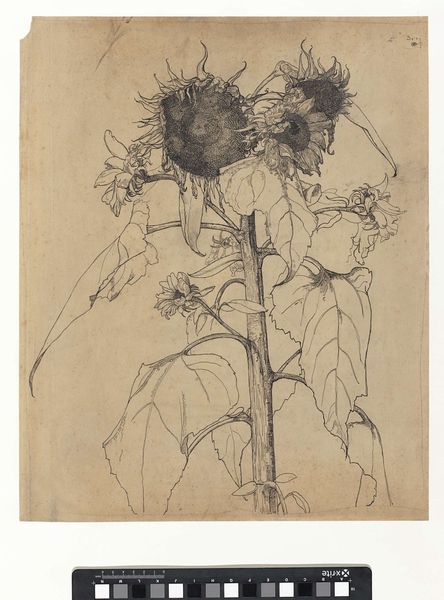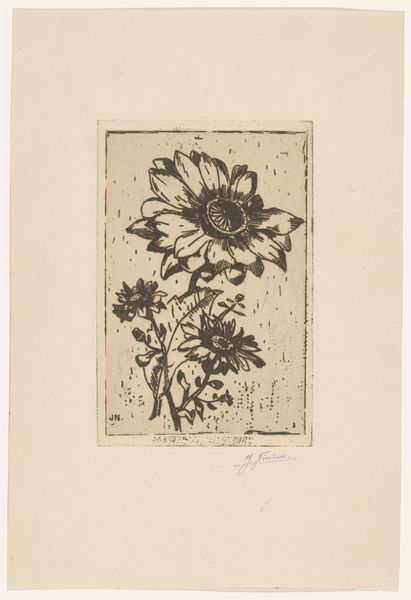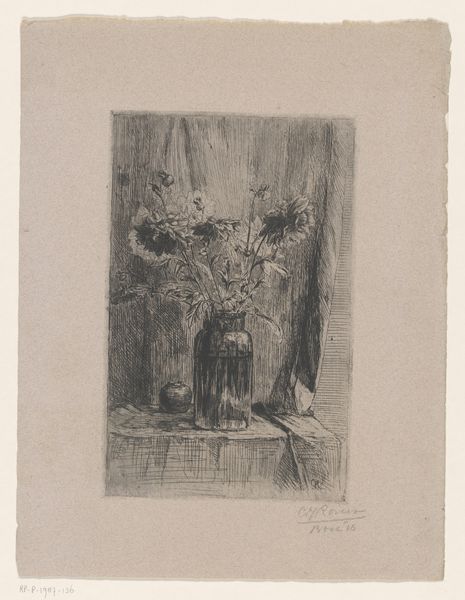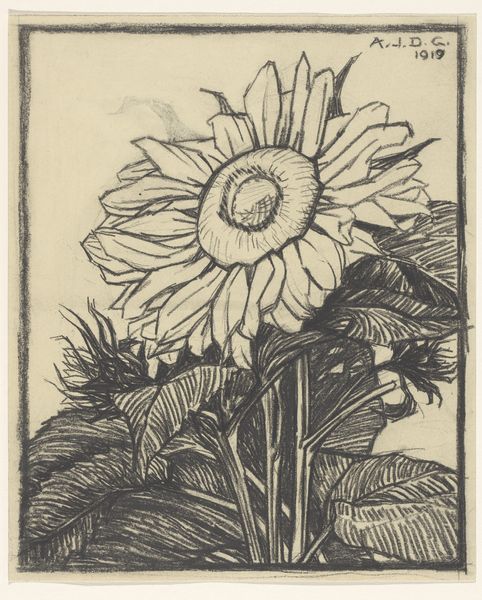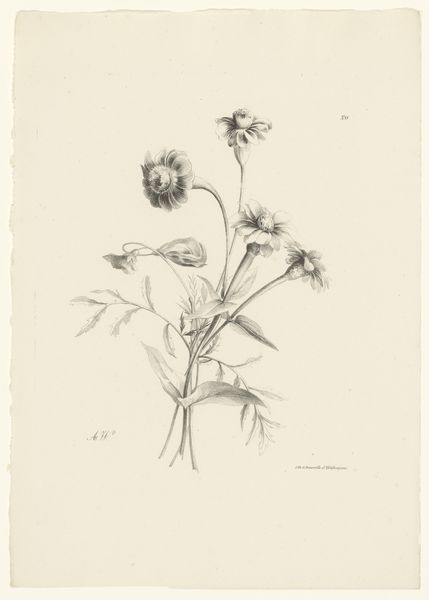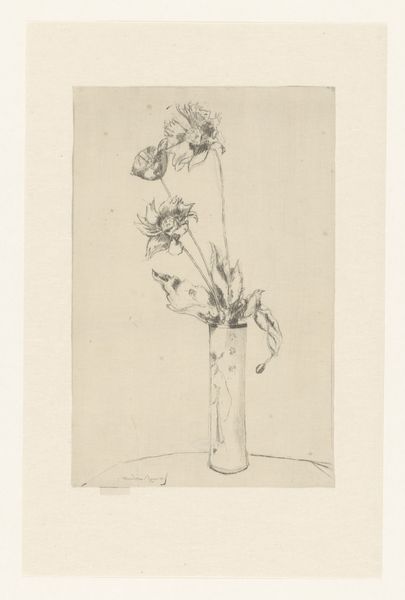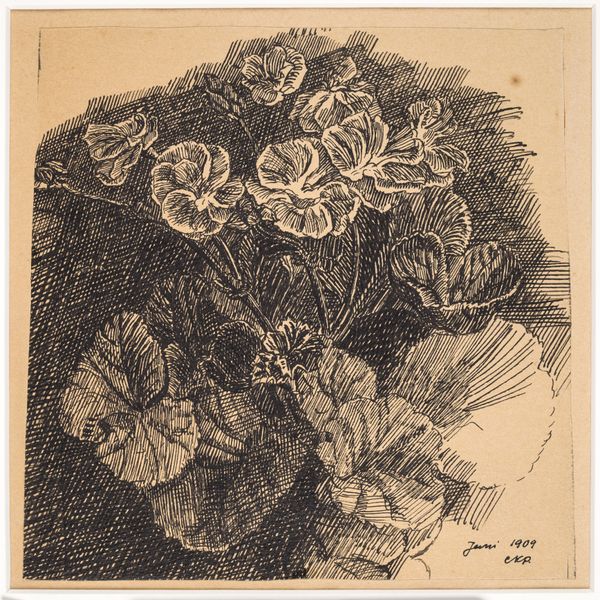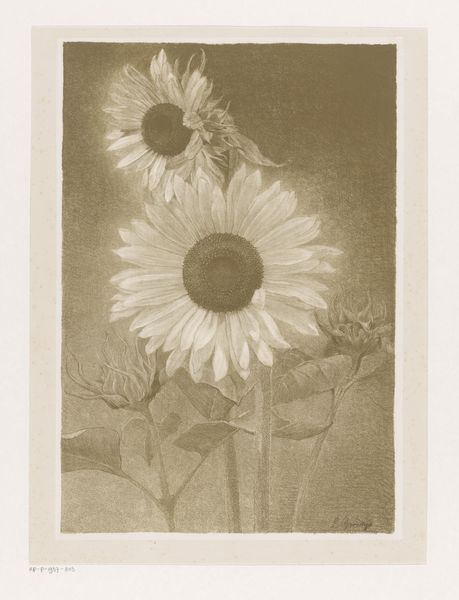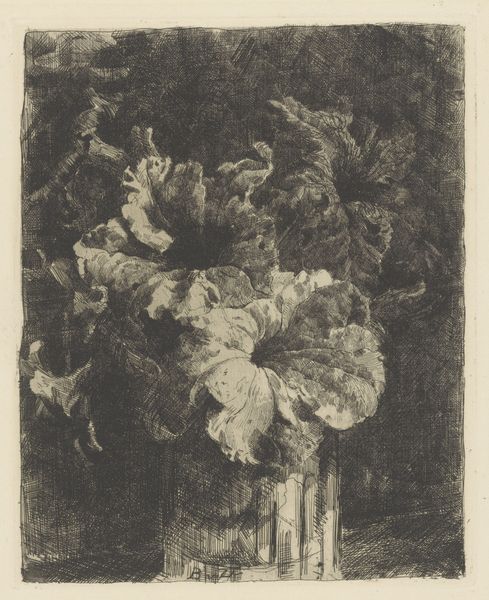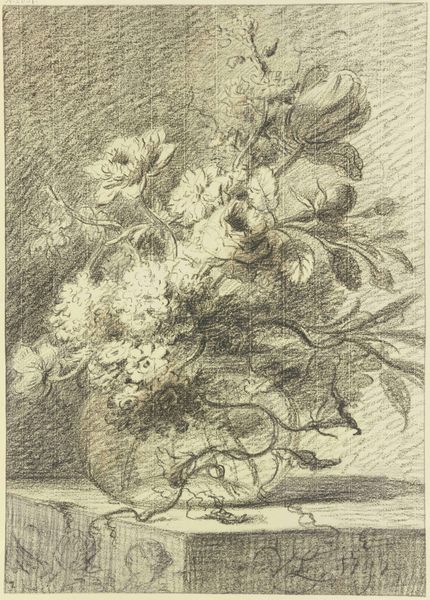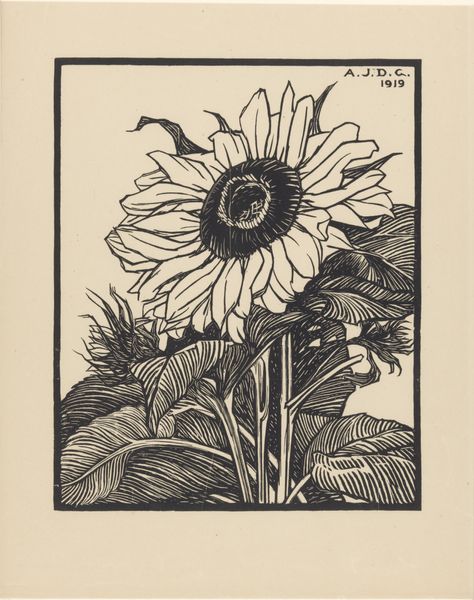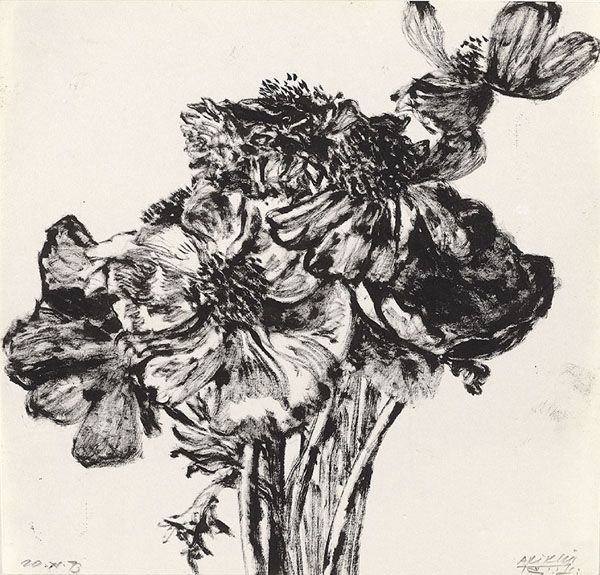
Dimensions: height 515 mm, width 347 mm
Copyright: Rijks Museum: Open Domain
Curator: Here we have "Sunflowers in a Vase" by Barbara Elisabeth van Houten. It's an etching on paper, dating sometime between 1872 and 1950. Editor: The image has an arresting, almost somber quality. The flowers seem to be past their prime, perhaps symbolizing the passage of time. What is the scale like? Curator: It’s relatively small, about 24 by 18 centimeters. Given van Houten’s focus on printmaking, particularly etchings, it’s likely this was intended for a more intimate viewing experience, perhaps in a private collection or study. The means of production speaks to a wider culture of artistic reproduction at this time. Editor: The close hatching creates an intriguing contrast. I wonder how the medium of etching helps define the forms here. It makes me think of definitions of shape and shade. Curator: The etching technique, of course, involves using acid to corrode the lines into a metal plate, which is then inked and printed. Consider the tools, labor, and expertise required – it reflects a democratization of art making processes. Editor: True, yet observe how van Houten leverages the etching to create a sense of depth and texture. The vase itself, seemingly transparent, contains and reflects light; it gives a three-dimensional illusion on a flat plane. Curator: And the use of sunflowers themselves—traditionally symbols of joy and vitality—shown here in a state of graceful decline could be a subtle commentary on the cycles of life. It suggests more complex relationship than simply beauty in full bloom. Editor: Perhaps. Still, I’m drawn to how the artist's hand captures the specific essence of those flowers through lines and shadows; the careful construction gives a striking visual harmony. The materiality is rendered beautifully despite the limited palette. Curator: Well, it is difficult to look past the obvious social factors—especially surrounding Dutch Realism and its relationship to both symbolism and material production that surely influence van Houten’s production during this time. Editor: Interesting perspectives. This reminds me how different interpretations and modes of analysis add up to enrich a comprehensive understanding of an artwork, both in its form and historical grounding.
Comments
No comments
Be the first to comment and join the conversation on the ultimate creative platform.
